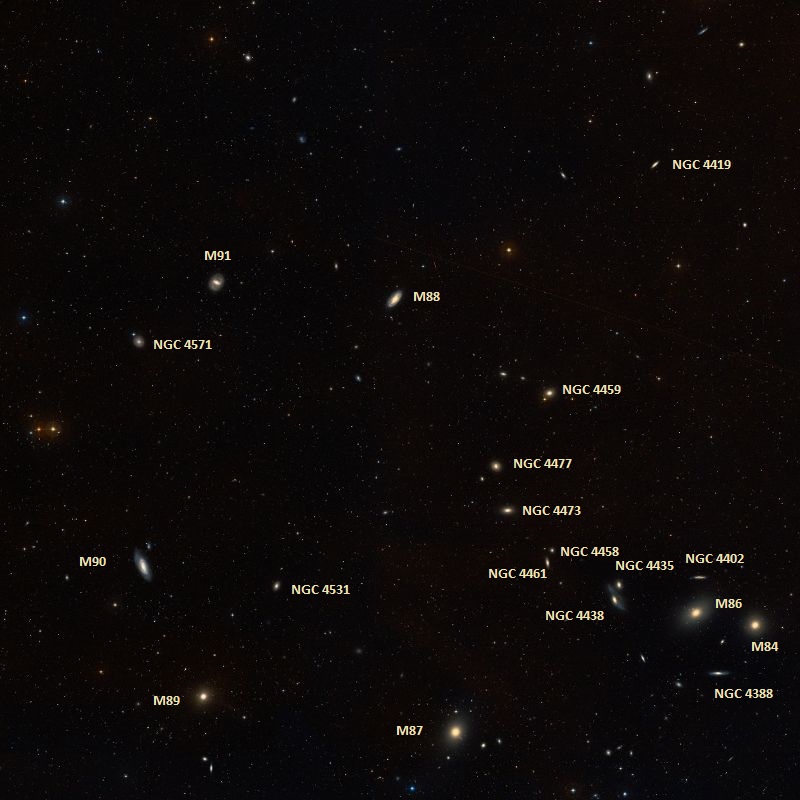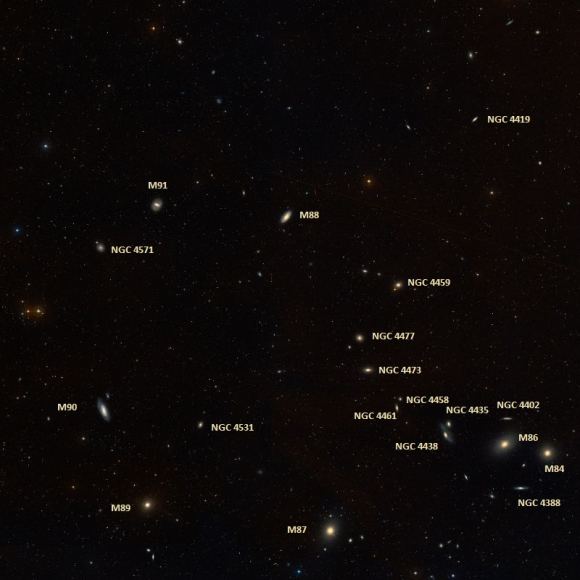Join us for an exciting journey as we explore the fascinating M88 Galaxy, part of our celebration of Messier Monday, dedicated to the memory of Tammy Plotner.
Back in the 18th century, the renowned French astronomer Charles Messier made a groundbreaking observation while studying the skies. Initially mistaking them for comets, he meticulously compiled a catalog of these intriguing celestial objects to prevent others from being misled. This catalog, known as the Messier Catalog, now contains over 100 objects and is one of the most significant compilations of Deep Space Objects.
One of these objects is Messier 88 (also known as NGC 4501), a spiral galaxy located between 50 and 60 million light-years away in the constellation Coma Berenices. M88 was one of the first recognized spiral galaxies and is among the brighter galaxies in the Virgo Cluster.
Description:
Messier 88, with its spiral arms stretching across 130,000 light-years of space, is a non-barred Seyfert Galaxy that contains a significant amount of gas. While Seyfert galaxies are starburst galaxies, the neutral interstellar medium within them plays a crucial role in the formation of new stars. According to a 2004 study by S. Onodera et al., NGC 4501 has a high degree of central gas concentration for a non-barred galaxy. The study also explains the presence of double peaks in the nuclear concentration and spiral arms. Gas motions in NGC 4501 were studied using a spiral model, which revealed gas inflow and explained the central-condensed double peaks.

Image: Messier 88 and the Virgo Cluster. Credit: Wikisky
Interestingly, M88 might be doubling its nucleus. A 1998 study by O.K. Sil’chenko et al. states that the solar magnesium-to-iron ratios in the galactic nuclei show evidence of long-duration secondary nuclear star formation bursts that produced distinct chemically different stellar subsystems. Additionally, detailed analyses of stellar and gaseous structures in the centers of NGC 4216 and 4501 have revealed circumnuclear stellar-gaseous disks, which demonstrate fast axisymmetric rotation and lie in the planes of the main galactic disks.
According to a 2010 study by J.H. Knapen et al., stars in starburst galaxies like M88 form along the dusty arms. The study explains that near-infrared (NIR) imaging is used to observe the old stellar population and estimate the mass of galaxies. The comparison of INGRID Ks imaging with B and R broad-band images and narrow-band Hα images provides insights into how mass and star formation are concentrated in spiral arms.

Image: Messier 88 by the Hubble Space Telescope. Credit: NASA/ESA
History of Observation:
M88 was discovered by Charles Messier on the night of March 18, along with seven other member galaxies of the Virgo Cluster. He described it as a nebula without stars, located in Virgo between two small stars and one star of the sixth magnitude. William Herschel and his son John also observed M88, and Lord Rosse identified it as one of the first “spiral nebulae.” However, it was Admiral Smyth who gave it the attention it deserved. He described M88 as a long elliptical nebula with a pale-white color, oriented in a line bearing northwest to southeast. Smyth also noted its spindle figure and the presence of several other objects in the vicinity.
Locating Messier 88:
To locate Messier 88 in the constellation Coma Berenices, begin with the base M84/M86 pairing, roughly midway between the stars Beta Leonis (Denebola) and Epsilon Virginis (Vindemiatrix). By following a “grid” pattern, you can navigate the Virgo galaxy field with ease. Once you have M84/M86 in your view, move one low-power eyepiece field east and slightly north to find M87. From there, continue north for one or two eyepiece fields and then shift east by one field to find M88. Adjust the magnification to darken the background and bring out more details. M88 will appear as a vague, round misty patch in small telescopes, but larger apertures will reveal several smaller, fainter galaxies along the way.
M88, also known as NGC 4501, is a magnificent spiral galaxy located between 50 and 60 million light-years away in the constellation Coma Berenices. With its spiral arms extending across 130,000 light-years of space, M88 is a non-barred Seyfert Galaxy that contains a significant amount of gas. The high degree of central gas concentration in NGC 4501 plays a crucial role in the formation of new stars. The galaxy’s unique features, such as the double peaks in its nuclear concentration and spiral arms, have been studied extensively by astronomers. Observations have revealed gas inflow and the possible explanation for the central-condensed double peaks in NGC 4501. M88 also exhibits intriguing properties, such as doubling its nucleus and the existence of circumnuclear stellar-gaseous disks. These features offer insights into the complex mechanisms that shape galaxies and fuel activities like star formation and black hole activity. To observe M88, locate the base M84/M86 pairing in the Virgo galaxy field, and then navigate east and slightly north to locate M88. Using different magnifications, you can explore the details and surrounding objects in this captivating spiral galaxy. Enjoy your journey through the mesmerizing M88 Galaxy!
m88 galaxy

